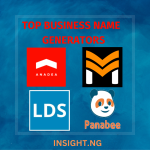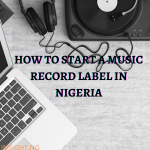When a business fails, it’s because they don’t know their market well enough. They spend a lot of resources on advertisement and physical presence when the road to success involves knowing the right market.
The market, especially the Nigerian market, is a big one. You have to study and understand it to achieve growth. This is where market segmentation comes in play, identifying consumers and their needs will help you think of strategies to sell your products or services.
In this article, I will explain the concept of market segmentation in detail, the types, the benefits, and the difference between market segmentation and customer segmentation.
Table of Contents
What is Market Segmentation?
Market segmentation is the process of dividing a broad market into smaller groups of consumers with similar needs or characteristics by demographics, geography, psychographics, or behaviour.
In market segmentation, a company divides the entire market into segments to satisfy them and reach more people. It’s easier to create a connection and form a relationship with their audience. If you want to reach your target audience, you have to do it right, or you will waste precious money. One mistake that many businesses make is that they aim for the entire demographic, and they either get only a few or miss the target completely.
To segment a market, you split it into groups with similar characteristics. Splitting up an audience in this way allows for a more targeted marketing and personalised content.
When businesses apply market segmentation, it helps to make their marketing efforts meaningful. For instance, it can help you target the people most likely to become satisfied customers or enthusiastic consumers of your content.
Effective market segmentation can help businesses identify new opportunities, create targeted marketing campaigns, and increase sales and profitability. Ultimately, it helps to improve their competitive advantage.
Types of Market Segmentation
-
Demographic segmentation
This is where you divide the market based on demographic factors such as age, gender, income, and education level.
It is straightforward and one of the most effective segmentation. You can easily split your audience and create personas for your audience. For example, if you segment your audience based on your customers’ income, you can target them with products that fall within their budget.
Advantages of demographic segmentation
- It is easy to collect information.
- It is simple to measure and analyse.
- It is cost effective.
-
Geographic segmentation
This is where the market is divided by location and region, or in simpler terms, where they live and shop.
You also segment the market based on geographic factors such as city size, climate, and population density. People who live in the same geographical area usually have similar needs, mindsets and preferences.
For example, due to the climate and low rainfall in northern Nigeria, they can only grow crops that need little water or have a short period before yielding fruits like onion, potato, tomato, pepper, etc. This makes them the appropriate market for crops like yam, maize, cocoa, and cassava that don’t grow there.
-
Psychographic segmentation
This divides the market based on how your target customers think, including their lifestyle, values, attitudes, interests, and personality traits.
For example, you can segment your market based on the following:
- Personality
- Hobbies
- Values and beliefs
- Lifestyle
These characteristics are subjective, which makes psychographics difficult to identify – but it’s also the most valuable.
Social media and analytic tools are the best places to gather psychographic data. You can also use surveys and interviews to gain more insights.
Psychographic segmentation lets you know more about your customers’ likes, dislikes, needs, wants and likes. You can then create marketing campaigns that align with their psychographic profile.
Subscribe to our newsletter and YouTube Channel to receive notifications of latest posts on business growth and other aspects of life.
-
Behavioural segmentation
This involves dividing the market based on customer behaviour, such as buying habits, product usage, and common behaviours they exhibit when interacting with your brand.
For instance, you can group your audience based on
- Spending habits
- Browsing habits
- Product feedback
Gather data through your website analytics and identify patterns in your customer’s behaviour, which will help predict how they’ll interact with your brand.
Then, you can leverage this data to provide personalised recommendations that address your customers’ needs. For example, YouTube gives personalised recommendations to its users based on their search and view history.
Read Also: How to Increase Visibility for Your Business in Nigeria
-
Occasion-based segmentation
Here, you divide the market based on specific occasions or events, such as holidays or life events like weddings or graduations. Marketers take advantage of these occasion to provide products/services which are perfect for the celebration.
For example, during salah celebration in Nigeria, traders in the north travel to different parts of the country to sell cows and ram for the celebration. They know people need these animals during this period, so they provide them during the occasion.
-
Benefit segmentation
This involves dividing the market based on the specific benefits or solutions customers seek from a product or service. This involves the perceived value customers believe they will receive from your service.
Example:
Companies that manufacture toothpaste market their products to different customer segments based on the different benefits each segment desires. Brands such as Colgate and Pepsodent produce different toothpaste, including those designed for aesthetic purposes, such as whitening, and those designed for health purposes, such as improved gum health.
Different customer segments will be targeted by the product lines and marketing strategies of these businesses. By analyzing the characteristics of those who purchase whitening toothpaste and those who purchase gum care toothpaste, it is possible to determine which strategies will be most effective for each market segment.
-
Customer segmentation
You can also divide the market based on your individual customers’ specific needs, preferences, and characteristics rather than on broader demographic, geographic, or psychographic factors.
Read Also: Steps to Sustainable Marketing for Businesses in Nigeria
Benefits of Market Segmentation
-
Better understanding of customer needs
It helps companies understand their customers’ needs, preferences, and behaviour and tailor their products and marketing strategies to meet those needs more effectively. It enables you to build the personalised journeys your customers are craving.
-
Improved targeting
By dividing the market into smaller segments, businesses can focus their marketing efforts and resources on the most promising and profitable segments, which will be more effective. With a clearer understanding of your customers, you can create products that better serve their needs, desires and expectations.
-
Competitive advantage
By serving specific customer segments with targeted products and marketing, businesses can stand out and differentiate themselves from their competitors and gain a competitive advantage.
-
More efficient use of resources
By focusing on specific customer segments, companies can use their resources more efficiently and effectively, which will reduce waste and improve profitability.
-
Increased customer loyalty
By meeting their customers’ specific needs and preferences, companies can increase customer satisfaction, loyalty, and advocacy, leading to repeat business and positive word-of-mouth referrals.
Read Also: 10 Wrecking eCommerce Business Mistakes You Must Avoid
Market Segmentation vs. Customer Segmentation
Market segmentation is basically dividing a larger market into smaller groups of customers who share similar needs, characteristics, or behaviours. After identifying these specific segments, you introduce marketing strategies and product offerings tailored to them. We can see an example of market segmentation from Nike, where they segment the market based on demographic factors such as age or income and behavioural factors such as level of physical activity or the frequency of shoe purchases.
Customer segmentation, on the other hand, is grouping your customers based on their individual characteristics such as demography, where they live and shop, their lifestyle and behavioural patterns. It is a more personalised approach that involves creating specific customer profiles or personas based on individual customers’ unique needs and preferences. For example, Nike might make a customer persona for a young male athlete whose dream is to be an Olympic champion and needs shoes that provide support, comfort, and everything else to get him there.
Both market segmentation and customer segmentation are important because they allow companies to create targeted marketing campaigns that will help them connect better with their customers. When they understand the specific needs and preferences of different customer segments, companies can develop products and marketing campaigns that are more relevant and appealing to their customers. This can lead to increased customer satisfaction, loyalty, and improved business performance.
Conclusion
If you want to reach your target audience better or forge a valuable and long-lasting relationship with your customers, you should take market segmentation seriously. It will benefit your business in so many ways. You can segment your market based on one of the types, or you can combine two or more types.
Are you an entrepreneur, or do you love entrepreneur-related articles? Then, you are just in the right place. Simply join our WhatsApp community to learn more.
About Author
Latest entries
 EntrepreneurMarch 7, 2023Everything You Need to Know About Market Segmentation as an Entrepreneur
EntrepreneurMarch 7, 2023Everything You Need to Know About Market Segmentation as an Entrepreneur CareerFebruary 4, 2023How to Become a Product Manager in Nigeria
CareerFebruary 4, 2023How to Become a Product Manager in Nigeria Business InsightsJanuary 2, 2023Top 5 Effective Business Name Generators to Choose A Business Name
Business InsightsJanuary 2, 2023Top 5 Effective Business Name Generators to Choose A Business Name EntrepreneurNovember 30, 2022How to Start A Music Record Label in Nigeria
EntrepreneurNovember 30, 2022How to Start A Music Record Label in Nigeria

